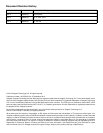
SEAGATE LAPTOP ULTRATHIN HDD SATA PRODUCT MANUAL, REV. C 2
1.0 INTRODUCTION
This manual describes the functional, mechanical and interface specifications for the following Seagate
®
Laptop Ultrathin HDD SATA
model drives:
These drives provide the following key features:
5400-RPM spindle speed.
16MB buffer.
Quiet operation. Fluid Dynamic Bearing (FDB) motor.
High instantaneous (burst) data-transfer rates (up to 6Gb/s).
Perpendicular recording technology.
State-of-the-art cache and on-the-fly error-correction algorithms.
Native Command Queuing (NCQ) with command ordering.
Full-track multiple-sector transfer capability without local processor intervention.
1000 Gs nonoperating shock and 400 Gs of operating shock.
SeaTools
TM
diagnostic software performs a drive self-test that eliminates unnecessary drive returns.
The 3D Defense System™, which includes Drive Defense, Data Defense and Diagnostic Defense,
offers the industry’s most comprehensive protection for disk drives.
Support for S.M.A.R.T. drive monitoring and reporting.
Support for Read Multiple and Write Multiple commands.
Worldwide Name (WWN) capability uniquely identifies the drive.
Momentus Thin Self-Encrypting Drive models have the following additional features
Automatic data encryption/decryption
Controlled access
Random number generator
Drive locking
16 independent data bands
Cryptographic erase of user data for a drive that will be repurposed or scrapped
Authenticated firmware download.
There is no significant performance difference between Self-Encrypting Drive and standard (non-Self-Encrypting Drive) models.
Standard models Standard SED models
ST500LT032 - 1E9142 ST500LT033 - 1ED142
ST320LT030 - 1E914C ST320LT031 - 1ED14C
NOTE
Previous generations of Seagate Self-Encrypting Drive models were called Full
Disk Encryption (FDE) models before a differentiation between drive-based
encryption and other forms of encryption was necessary.
NOTE
The Self-Encrypting Drive models indicated on the cover of this product manual
have provisions for “Security of Data at Rest” based on the standards defined by
the Trusted Computing Group (see
www.trustedcomputinggroup.org).


















